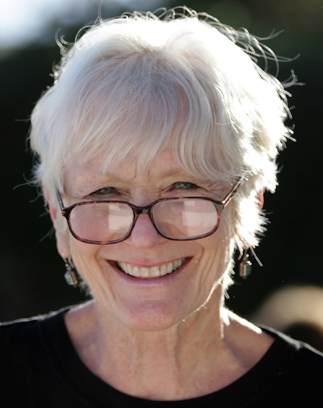Catch a Dream: Native American DreamCatchers
You’ve probably seen Native American Dreamcatchers. They can be simple and sweet or intricate and elaborate. They look almost magical… and in a way, they are! Dreamcatchers date back to as early as 700 AE. Some historians consider the dreamcatcher to be a symbol of unity among the various Indian Nations.
Dreamcatchers are thought to have originated from the Ojibwa Chippewa tribe, primarily from the northern USA and Canada. Later they were passed down through the generations to other tribes, including the Lakota tribe, who created their own legends and stories to go with the Dreamcatchers. In the Ojibwa Dreamcatcher story, a maternal, and mystical “Spider Woman” named Asibikaashi watched over the people of the tribe, especially the young children. Spiders were thought to be a symbol of protection and comfort. As the Ojibwa tribe grew, and spread out over a larger territory, Asibikaashi had a difficult task in overseeing all of the members of the tribe as they moved further and further away. So, she created the first Dreamcatcher as a talisman for children to hang above their beds. Mothers and grandmothers followed the example, and made Dreamcatchers for their families as a way to protect them from nightmares.
In the Lakota legend, a great teacher of wisdom named Iktomi appeared in the form of a spider. Iktomi spoke to the spiritual leaders in a sacred language only they could understand. As he told the story of the cycle of life, he took an elder’s willow hoop, filled with offerings of feathers, beads, and horsehair, and he began to spin a web, moving from the outside edges to the center. He talked about how in life there are good forces and bad forces, and how the good forces will lead people in the right direction, and bad forces will lead people in the wrong direction, and hurt them. He told the elders to use the web to help themselves and their tribe to reach their goals, to make use of their good ideas, and dreams.
Native American folklore explains that the night air is filled with both good dreams and bad dreams. The Dreamcatcher attracts all kinds of thoughts and dreams in its web. Bad dreams get trapped in the net, where they are then destroyed by the morning sun. Good dreams pass through the hole in the center, and then glide down the feathers to the person sleeping below. For this reason, tradition says that Dreamcatchers, in order to work properly, need to hang over the bed.
Each part of the authentic Native American Dreamcatcher has a meaning tied to nature. The hoop, or circle, represents the circle of life, the shape of the planets, and also the circle that the sun and the moon travel across the night sky. The web itself is representative of a spider’s web, and a bead in the web represents the spider, the weaver of the web. Some say that smaller beads incorporated into the design represent good dreams and thoughts frozen in time as sacred charms. The feathers are like a soft ladder that the good dreams can descend to the sleeping child. An owl’s feather is symbolic of wisdom, and an eagle’s feather stands for courage.
For this reason, it is important that Dreamcatchers be made of all-natural materials. The best way to do that is to use items found right in your backyard, or on a nature walk. You can make beads out of acorns or nutshells, or use wooden beads that are already made. Here’s a list of materials you can use – and feel free to add your own ideas to make the dream catcher special and meaningful to you. This is a great project to do with kids. Use your imagination, have fun and get creative with your design. If you’re looking for inspiration, check out some of the amazing designs on pinterest.
– A hoop – made from grapevine, willow, or soft, flexible tree branches. You can make this any size you like. A wooden embroidery hoop works well, too.
– Fabric – this can be cotton, ribbon, suede, or yarn
– String – twine, or macramé rope work well
– Beads – use beads made from nature, avoid plastic beads
– A feather, or more than one feather
As an option, there are Dreamcatcher “kits” you can buy that provide all the materials you need, but I think it’s more fun and authentic to make them from scratch.
Directions:
- Make a hoop. If using dry willow or grapevine, soak them in warm water for 15 minutes or so to soften so that they are easier to bend. Twist the vines into a circle shape and tie the ends together. Put a weight on top of the hoop so that it dries flat.
- When dry, cover the hoop with torn up scraps of fabric, ribbon, or yarn. Use any color you like. Feel free to use glue to keep everything in place. Make a hanging loop at the top so you can hang your dream catcher when done.
- Mark off 8 points evenly spaced on the hoop. These will be the points where to tie your twine or string. When you come all the way around, you’re ready to start the next “layer” of web. Tie a knot in the center of the string, and move to the center of each string with another knot. Keep going until you have the size of hole you want in the center. At some point, add a bead near the center to represent the spider.
- At the bottom of the hoop, add your feather. The feather should be directly opposite the hanging loop. If you are adding more than one feather, the longest feather should be at the bottom.
- Hang the dream catcher over your bed, and know that sweet dreams are headed your way!
RESOURCES:
https://en.wikipedia.org/wiki/Dreamcatcher
http://www.dream-catchers.org/












 An excerpt from The Ayurvedic Guide to Fertility
An excerpt from The Ayurvedic Guide to Fertility

 For those looking toward industries poised to lead the growth charge over the next five-to-ten years, one need look no further than telehealth and telemedicine. These global markets are expected to exceed $185 million from 2019 through 2026, according to the new Advanced
For those looking toward industries poised to lead the growth charge over the next five-to-ten years, one need look no further than telehealth and telemedicine. These global markets are expected to exceed $185 million from 2019 through 2026, according to the new Advanced  For students from K-12 through college-level requiring speech therapy in particular, remote access to professional services and practitioners will clearly become more ubiquitous. In fact, “the demand for speech-language therapists is already outpacing the supply in some cities,” says Licensed Speech Pathologist Orna Kempler-Azulay, president of
For students from K-12 through college-level requiring speech therapy in particular, remote access to professional services and practitioners will clearly become more ubiquitous. In fact, “the demand for speech-language therapists is already outpacing the supply in some cities,” says Licensed Speech Pathologist Orna Kempler-Azulay, president of  An excerpt from LOVE ON EVERY BREATH by Lama Palden Drolma
An excerpt from LOVE ON EVERY BREATH by Lama Palden Drolma Lama Palden Drolma is the author of Love on Every Breath. A licensed psychotherapist, spiritual teacher, and coach, she has studied Buddhism in the Himalayas with some of the most preeminent Tibetan masters of the twentieth century. Following a traditional three-year retreat under his guidance, Kalu Rinpoche authorized her to become one of the first Western lamas. She subsequently founded the Sukhasiddhi Foundation, a Tibetan Buddhist teaching center in Fairfax, California. Visit her online at
Lama Palden Drolma is the author of Love on Every Breath. A licensed psychotherapist, spiritual teacher, and coach, she has studied Buddhism in the Himalayas with some of the most preeminent Tibetan masters of the twentieth century. Following a traditional three-year retreat under his guidance, Kalu Rinpoche authorized her to become one of the first Western lamas. She subsequently founded the Sukhasiddhi Foundation, a Tibetan Buddhist teaching center in Fairfax, California. Visit her online at